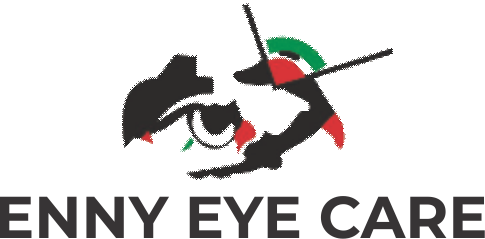Can Intraocular Lenses Correct Nearsightedness?
Nearsightedness, or myopia, is one of the most common refractive errors worldwide, causing distant objects to appear blurry while close objects remain clear. Over the years, various treatment options have been developed to correct this condition, including glasses, contact lenses, and laser surgery. But one of the most innovative solutions is the use of intraocular lenses (IOLs). In this post, we’ll explore how intraocular lenses can correct nearsightedness and help patients achieve clearer vision, especially for those looking for a long-term solution.
What Are Intraocular Lenses (IOLs)?
Intraocular lenses are artificial lenses that are surgically implanted into the eye to replace the natural lens, most commonly during cataract surgery. However, in recent years, IOLs have also become an effective option for treating refractive errors like nearsightedness. These lenses work by focusing light properly onto the retina, allowing patients to see clearly at different distances, including faraway objects that were previously blurry.
How Do IOLs Correct Nearsightedness?
There are several types of IOLs designed to address different visual needs:
- Monofocal IOLs: These lenses focus on one specific distance, typically far away. While monofocal IOLs are highly effective in correcting distance vision, patients may still require reading glasses for near tasks.
- Multifocal IOLs: These lenses provide clear vision at multiple distances, helping correct both near and far vision. This makes them a great option for patients with nearsightedness who also want to avoid reading glasses.
- Toric IOLs: For patients with both nearsightedness and astigmatism, toric IOLs offer a solution by correcting both refractive errors at once.
By choosing the right IOL, patients can reduce their dependency on glasses or contact lenses and experience clearer vision.
Benefits of IOLs for Nearsightedness
- Long-Lasting Results: Unlike glasses or contact lenses, which need to be replaced regularly, IOLs provide a permanent solution for nearsightedness.
- Clearer Vision: IOLs correct the refractive error at the source, improving distance vision and, depending on the type of lens, potentially even near vision.
- Improved Quality of Life: Patients who opt for IOLs often enjoy greater freedom from corrective eyewear, making daily tasks easier and more enjoyable.
Who is a Candidate for IOLs?
Intraocular lenses are generally recommended for patients over the age of 40, particularly those who have cataracts or are not good candidates for LASIK surgery. However, individuals with significant nearsightedness who seek a more permanent correction may also be ideal candidates. A thorough consultation with an eye care professional is necessary to determine the best treatment approach.
Risks and Considerations
While IOLs provide excellent results for many patients, there are still some risks and considerations to keep in mind:
- Surgical Risks: As with any surgery, there are risks involved, such as infection or inflammation, though these are rare.
- Adaptation Period: It may take a few weeks for the eyes to fully adjust to the new lenses, and some patients may still need reading glasses or additional vision correction for certain tasks.
- Cost: IOL implantation can be more expensive than traditional corrective measures like glasses or contact lenses, though it is a long-term investment in your vision.
Conclusion
Intraocular lenses (IOLs) are a revolutionary solution for patients with nearsightedness, offering clearer vision and a life with less dependency on glasses or contact lenses. Whether you’re considering IOLs as part of cataract surgery or to correct a refractive error, it’s important to discuss your options with an eye care professional. At Enny Eye Care, we provide expert consultations and personalized treatment plans to help you achieve your vision goals. Schedule your appointment today and see how IOLs can transform your vision!


